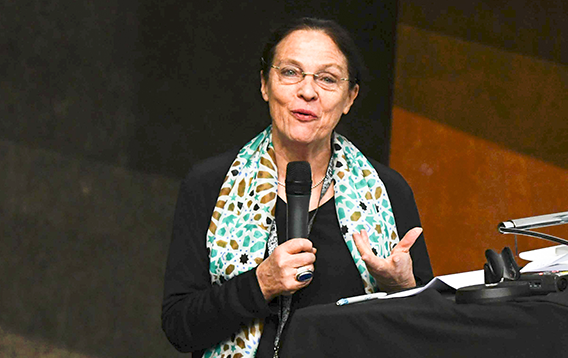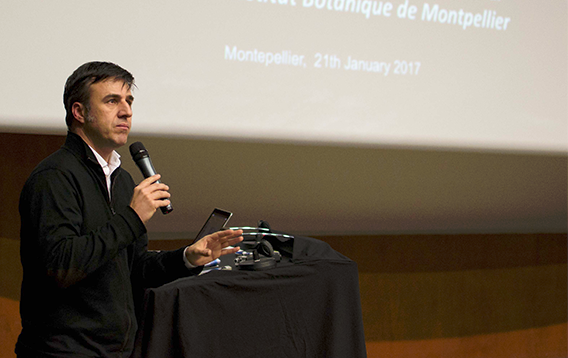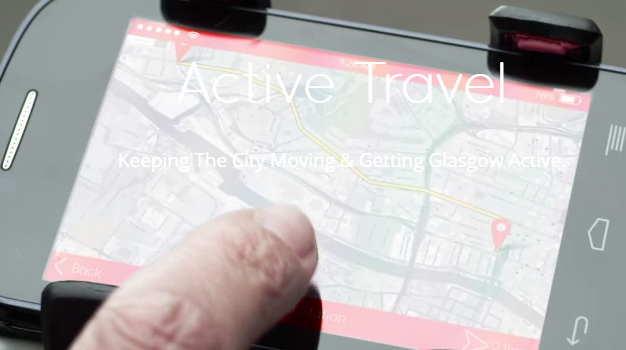
Towards imaginary and synergistic experiments at the era of Anthropocene.
The cards are scrambled and the models are deleted. However, it is pressing “to attack the dis-adaptation” according to the expression of the enquiring geographer Olivier Soubeyran who works on the dialogue and the adaptation to the climate change. Indeed, the characteristic of life and the life of human settlements is to adapt and rehabilitate themselves again and again. What requires to change and be adjusted according to the naturo-cultural complex systems, in order to limit the harmful effects, to benefit from beneficial opportunities, to imagine the other possible ones to live. It is not enough to denounce causes and damages caused by binary logics of oppositions, separations, like by deadly productions of pollution of the mediums, exclusions and inequalities between rich and poor. It is a question of developing other manners (and not styles) of imagining and of configuring a liveable world, and thus to see, think, make.
After the harmony, the experiment of the crack
The philosopher Daniel Payot, in his work entitled “After the harmony”, gives an account of artistic practice inevitably confronted “, during all the 20th century, with impossibility (or prohibition) of reporting his works to an ideal understanding according to the old concept of the harmony: beauty like completeness, of the completed form, the unit to which nothing could be addeed nor cut off, of the figuration into small of a world finally reconciled”, but the artists “understood on the contrary that art had as a task to contribute to show and give rise to think, that this task had always been his, and that it required today that one put itself in search of a new experiment, properly contemporary, understanding”.
Thus the idea of “crack” is put ahead in the chapter “Transmission and catastrophe” in connection with the reading of a text of Walter Benjamin in Paris, capital of the 19th century: “Although the concept is not clarified by it here, one guesses thus that the crack is not to interpret primarily like a lack, the index of a loss or the effect of an accident, but rather as the reserve with a future which each phenomenon would contain, as an opening in him who exposes it and which dedicates it with what is not him. The crack could one say, it is what phenomenon is with the different one, in the world and even with oneself, insofar as the other, the world and it are what can and must still come or occur. The crack, it would be “the ex”of the word existence: the going beyond the station or the stagnation, the possibility in general of a movement ahead or in-outside… “.
Resistances and rebounds
Regarding a certain modernity which privileged a form of functionalism and exploitation, exhausting the natural environments and human, it is with another social and political paradigm like with another ecology of the attention and the action that we are necessary in order to optimize the conditions of the “anthropisation” and those of “making company”. It is by a town planning and installations in synergies and opening that a medium is regenerated in its living strength. This paradigmatic change (underlined in particular yesterday by Hans Jonas with “Principle Responsibility”, taken again today inter alia by Edgar Morin as by Bruno Latour) led to develop other scenarios.
We will mention five principles which appear from now on decisive in a process of project synergistic working in a way waked up and responsible in a “cracked” world.
Principle 1. Immersion and corythmes.
The landscape designer Gilles Clément underlined many times the urgency of a thought ecologist which points out the importance “to be immersed, to accept himself like being of nature, revising his position in the universe, to place themselves more at the top or the center but inside and with”. He calls some with a culture of alive, in situ and experiment, “to go obviously; if there exists a possibility for the man of putting up with ecological complexities in order to ensure its own perennially on planet, that will be done in most empirical of the experiments of ground, step by step and not starting from an arsenal of contradictory and sometimes dangerous texts police resulting from the leading technocratic thought”. What results in being centered on the interactions and inter-productions. Immersive space, it is thus the immersion in situ and the experiential, and thus the catch with serious of the rhythms cosmic, geological, atmospheric, biological, social, personal.
Principle 2. Adaptability, revalorization of the capacity to be adapted to always singular situations and always in becoming
The challenge consists in exploring potentialities starting from the resources and resistances specific to a specific medium. This test of the mediums, which is against the imposition of models a priori, passes by the recognition of realities and rhythmic experiments which redefine the plighting of troths of alive nature and the culture as well as interlacings of the scales of the microphone and macro, of the close relation and the distance.
Principle 3. Reliance: an art of the links
A medium inhabited being connected by a multiplicity of links, it is by an art of the links, connections, that the mediums are spared in their symbioses, coexistences and divisions.
Principle 4. The art of the recoveries and rebounds. In this art, the test of Søren Kierkegaard, “the recovery”, is lighting insofar as it explores a “paradoxical category” which combines concretely what was (the “same one”) with what is new (the “other”). This posture or this phenomenon is not reduced to a redoubling or an impossible repetition as such, the recovery comprises a re-creation. “The recovery is reality, the serious one of the existence” explains it.
by Chris Younes
Philosopher, ESA Paris



